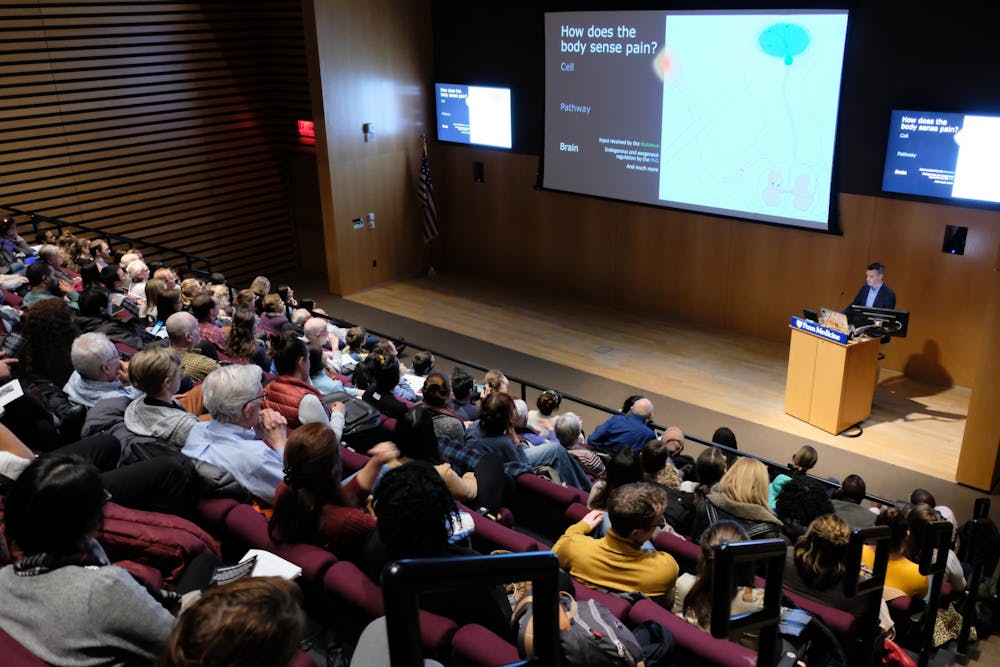Penn's Neuroscience Graduate Group hosted a lecture titled "OUCH! The Neuroscience of Pain" Wednesday night to help bring awareness of faculty research to the general public.
The event, which was the 12th installment of the biannual Neuroscience Public Lecture series, featured TED-style talks from three Penn faculty members who study how pain is perceived by the brain. The lectures were organized by graduate students, who aimed to explain how scientific research conducted at Penn can have tangible effects on communities.
"Ideally we like to focus on topics that anyone can understand, and the professors do work that is immediately useful," said Evan Gallagher, a second-year neuroscience Ph.D. student and member of the event organizing committee.
Event co-chair and second-year neuroscience Ph.D. student Ashley Robbins said the lectures focused on pain because of relevant new research from Penn faculty members, as well as public interest in topics like opioid addiction.

Neuroscience PhD candidate Daniel Kalamarides
“In the current atmosphere, we have had a lot of questions about focusing on opiates, but we had already done an addiction lecture," Robbins said. "And it wasn’t really the purpose we wanted to bring to this one — we really wanted to get in to basic neuroscience. So we decided that pain was a good bridging topic."
Both Robbins and Gallagher agreed that the main goal of the event was to expose the general public to neuroscience research and its implications. All three professors who presented also addressed tangible effects of their work.
“Public engagement is our civic duty as scientists,” biology professor Ishmail Abdus-Saboor said as he began his presentation. Abdus-Saboor explained his research exploring which neurons are important for acute and chronic pain in order to design a non-invasive way to block the activity of these neurons.
RELATED LINKS:
Center for neuroscience & society talk looks at impact of public health ads on behavior
Penn biologists find microbes cause gene variation across fruit fly generations
The event featured a presentation from psychiatry professor Gregory Corder, who shared his research on how neural circuits in the brain and spinal cord produce pain experience. Corder also discussed possible treatments for chronic pain, including using engineered therapeutic viruses.
“The goal is just to normalize people’s lives," Corder said. "It is not to eliminate pain completely.”

Attendees agreed that the event presented neuroscience ideas in an accessible way.
Biology professor Nicholas Betley, who described himself as a "non-traditional pain researcher,” talked about his work on the relationship between hunger and pain and how our brains prioritize the two. He discussed his efforts to design a non-addictive painkiller.
First-year neuroscience graduate student Gianna Perez, who attended the event, highlighted the importance of scientists engaging with the public.
"Something that I am really passionate about is the science-society interface," Perez said. "So I think it is really important to do stuff like this and engage with the community and also show that science is something that is for everyone and it doesn’t have to be inaccessible."









